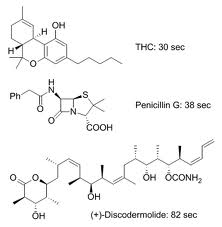XML's design goals emphasize simplicity, generality, and usability over the Internet. It is a textual data format with strong support via Unicode for the languages of the world. Although the design of XML focuses on documents, it is widely used for the representation of arbitrary data structures, for example in web services.
Many application programming interfaces (APIs) have been developed that software developers use to process XML data, and several schema systems exist to aid in the definition of XML-based languages.
As of 2009[update], hundreds of XML-based languages have been developed, including RSS, Atom, SOAP, and XHTML. XML-based formats have become the default for most office-productivity tools, including Microsoft Office (Office Open XML), OpenOffice.org (OpenDocument), and Apple's iWork.
For more information please visit: XML
Example of XML :
XML Table
Computational Methods:
| Molecular Mechanics | Semi Empirical | Ab Initio |
| Very fast speed | Fast speed | Slow speed |
| Restriction parameters | Good accuracy | Very good accuracy |
| Very good protein modelling | Good protein modelling | Best protein modelling |
XML Tree
XML Documentations
<?xml version=“1.0” encoding=“ISO-8859-1”?>
<Computational_Method>
<molecular_mechanics>
<speed>Very fast speed</speed>
<accuracy>Restriction parameters</accuracy>
<protein_modelling>Very good protein modelling</protein_modelling>
</molecular_mechanics>
<semi_empirical>
<speed>Fast speed</speed>
<accuracy>Good accuracy</accuracy>
<protein_modelling>Good protein modelling</protein_modelling>
</semi_empirical>
<ab_initio>
<speed>Slow speed</speed>
<accuracy>Very good accuracy</accuracy>
<protein_modelling>Best protein modelling</protein_modelling>
</ab_initio>
</Computational_Method>










